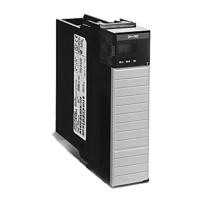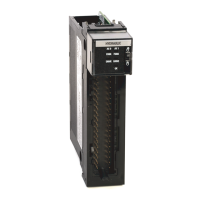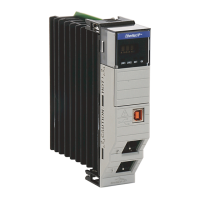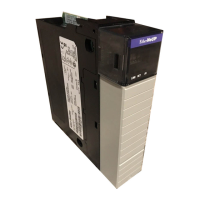Rockwell Automation Publication 1756-IN062A-EN-P - August 2017 3
ControlLogix DC Digital I/O Modules
ATTENTION: Before installing, configuring, operating, or
maintaining this product, read this document and the documents
listed in the additional resources section for installing,
configuring, or operating equipment. Users should familiarize
themselves with installation and wiring instructions in addition
to requirements of all applicable codes, laws, and standards.
This equipment is certified for use only within the surrounding air
temperature range of 0…60 °C (32…140 °F). The equipment
must not be used outside of this range.
Installation, adjustments, putting into service, use, assembly,
disassembly, and maintenance shall be carried out by suitably
trained personnel in accordance with applicable code of practice.
In case of malfunction or damage, make no attempt at repair.
Return the module to the manufacturer for repair. Do not
dismantle the module.
Use only a soft dry anti-static cloth to wipe down equipment. Do
not use any cleaning agents.
IMPORTANT Any illustrations, charts, sample programs, and layout examples
that are shown in this publication are intended solely for the
purposes of example. Since there are many variables and
requirements associated with any particular installation, Rockwell
Automation® does not assume responsibility or liability for actual
use based on the examples shown in this publication.
Environment and Enclosure
ATTENTION: This equipment is intended for use in a Pollution
Degree 2 industrial environment, in overvoltage Category II
applications (as defined in EN/IEC 60664-1), at altitudes up to
2000 m (6562 ft) without derating.
This equipment is not intended for use in residential
environments and may not provide adequate protection to radio
communication services in such environments.
This equipment is supplied as open-type equipment for indoor
use. It must be mounted within an enclosure that is suitably
designed for those specific environmental conditions that will be
present and appropriately designed to prevent personal injury
resulting from accessibility to live parts. The enclosure must have
suitable flame-retardant properties to prevent or minimize the
spread of flame, complying with a flame spread rating of 5VA or
be approved for the application if nonmetallic. The interior of the
enclosure must be accessible only by the use of a tool. Subsequent
sections of this publication may contain additional information
regarding specific enclosure type ratings that are required to
comply with certain product safety certifications.
In addition to this publication, see the following:
• Industrial Automation Wiring and Grounding Guidelines,
publication 1770-4.1
, for additional installation requirements.
• NEMA Standard 250 and EN/IEC 60529, as applicable, for
explanations of the degrees of protection provided by different
types of enclosure.
Prevent Electrostatic Discharge
ATTENTION: This equipment is sensitive to electrostatic
discharge, which can cause internal damage and affect normal
operation. Follow these guidelines when you handle this
equipment:
• Touch a grounded object to discharge potential static.
• Wear an approved grounding wriststrap.
• Do not touch connectors or pins on component boards.
• Do not touch circuit components inside the equipment.
• Use a static-safe workstation, if available.
• Store the equipment in appropriate static-safe packaging
when not in use.
Removal and Insertion Under Power (RIUP)
WARNING: When you insert or remove the module while
backplane power is on, an electric arc can occur. This could cause
an explosion in hazardous location installations.
Be sure that power is removed or the area is nonhazardous before
proceeding. Repeated electric arcing causes excessive wear to
contacts on both the module and its mating connector. Worn
contacts can create electrical resistance that can affect module
operation.
Removable Terminal Blocks (RTB)
WARNING: When you connect or disconnect the removable
terminal block (RTB) with field-side power applied, an electric arc
can occur. This could cause an explosion in hazardous location
installations.
Be sure that power is removed or the area is nonhazardous before
proceeding.
Waste Electrical and Electronic Equipment (WEEE)
WARNING: At the end of its life, this equipment should be
collected separately from any unsorted municipal waste.

